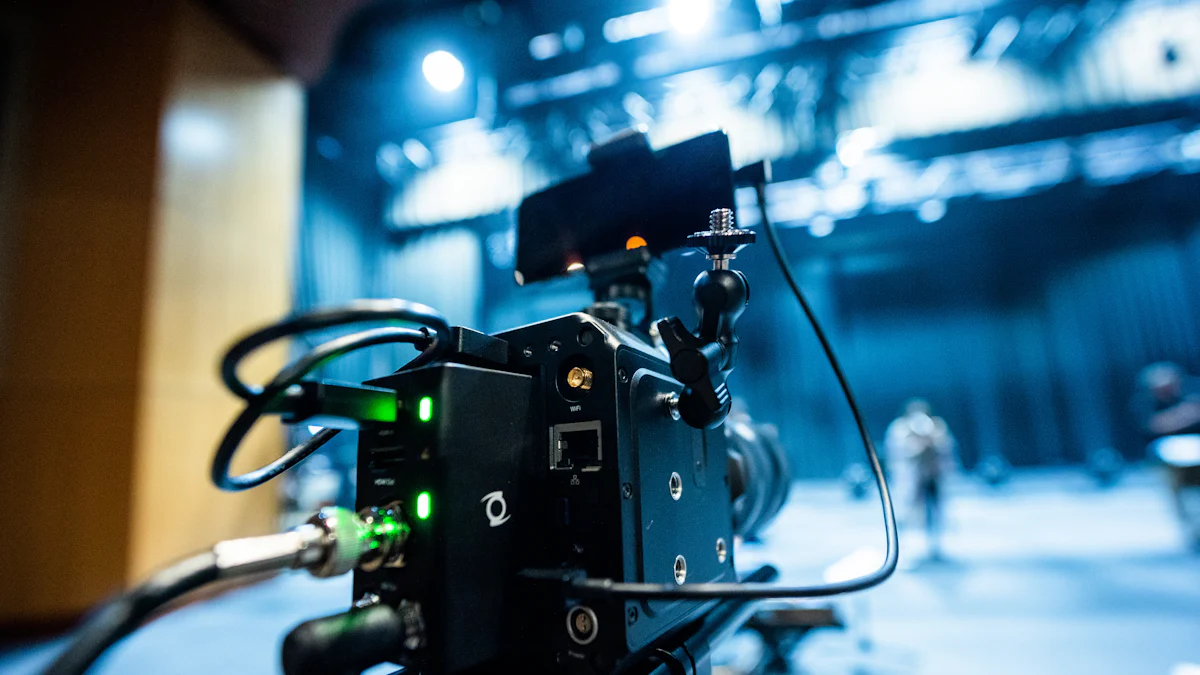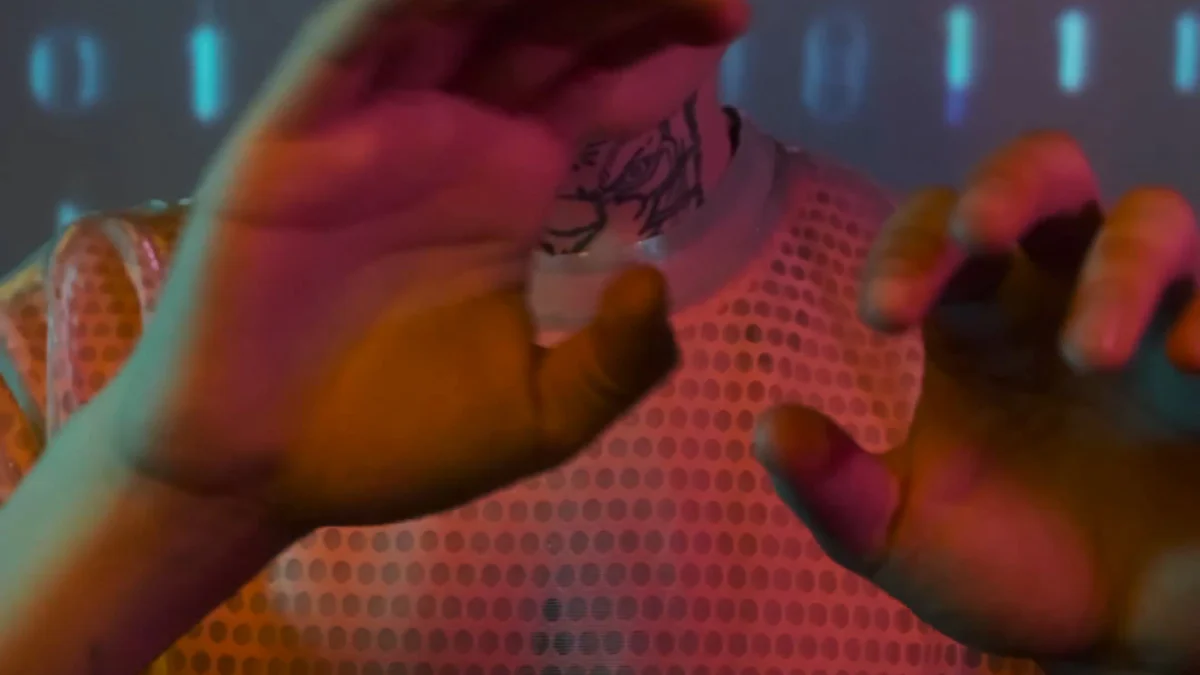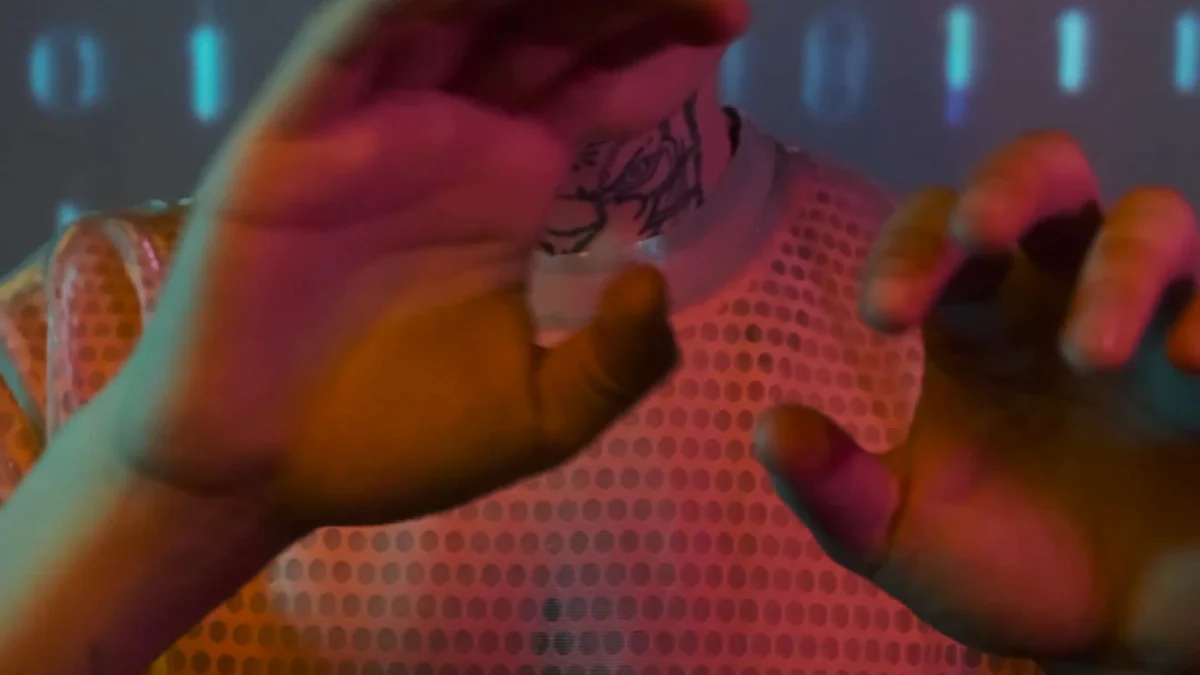Revolutionizing 3D Video: Latest Production Breakthroughs

3D video has transformed modern media, offering immersive experiences that captivate audiences. The market for 3D animation was valued at USD 17.21 billion in 2021 and is projected to reach USD 46.89 billion by 2030. Rapid technological advancements drive this growth, enhancing realism and efficiency. Innovations like Aroused.AI are revolutionizing production techniques. Staying updated with these breakthroughs is crucial. The rise of 3D porono exemplifies the diverse applications and expanding possibilities in this dynamic field.
Historical Context of 3D Video
Early Developments
Origins of 3D technology
The origins of 3D technology trace back to the early 20th century. Innovators experimented with stereoscopic images to create depth perception. The first significant breakthrough occurred in the 1950s. Filmmakers introduced 3D films using anaglyph glasses. This innovation allowed audiences to experience a new dimension in cinema. However, the technology faced limitations. The quality of images often appeared blurry and the viewing experience caused discomfort.
Initial challenges and limitations
Initial challenges in 3D video production included technical and financial hurdles. Equipment costs were prohibitive for many filmmakers. The complexity of creating 3D content required specialized skills. Early 3D films struggled with synchronization issues. Audiences experienced headaches due to poor image alignment. Despite these challenges, pioneers continued to push the boundaries. The desire to enhance storytelling through immersive experiences drove innovation.
Evolution Over the Decades
Key milestones in 3D video production
Several key milestones marked the evolution of 3D video production. The release of Futureworld in 1976 featured the first 3D computer-generated animations. This film represented a pivotal turning point in the industry. The late 1970s saw the use of 3D animation in entertainment. The 1979 film Alien used 3D animation to create the iconic xenomorph creature. George Lucas' Star Wars films in the 1980s further cemented 3D animation in Hollywood. These films showcased the potential of 3D technology in storytelling.
Transition from analog to digital
The transition from analog to digital marked a significant shift in 3D video production. The invention of the I.M.A.X. 3D format in 1986 revolutionized the industry. Filmmakers used polarized lenses to create unique images for each eye. This innovation enhanced the quality of 3D images and improved audience comfort. The digital era brought advancements in rendering technology. Filmmakers could now produce more realistic and sophisticated 3D animations. The transition enabled greater creativity and efficiency in the production process.
Technological Advancements

Cutting-edge Techniques
Real-time rendering improvements
Real-time rendering has transformed 3D animation by enhancing the quality and interactivity of visuals. This technology allows creators to produce dynamic environments that audiences can experience instantly. High-quality visuals improve the overall efficiency of production processes. Proper hardware and software are essential to overcome challenges in real-time rendering. The advancements in this area have blurred the line between virtual and real worlds, offering more immersive experiences.
Enhanced depth perception technologies
Enhanced depth perception technologies have revolutionized 3D video production. These technologies provide a more realistic viewing experience by improving the perception of depth in visuals. Filmmakers can create more engaging content with these advanced techniques. The improvements in depth perception contribute to the sophistication of 3D animations. The audience enjoys a more lifelike experience, which enhances the storytelling potential of 3D videos.
Role of Artificial Intelligence
AI-driven editing and effects
Artificial intelligence plays a crucial role in modern 3D video production. AI-driven editing automates various aspects of the creative process, streamlining workflows. This automation allows creators to focus on developing more innovative content. AI enhances the realism of animations by generating complex effects with precision. The integration of AI in editing contributes to the development of interactive animations that captivate audiences.
Aroused.AI represents a significant breakthrough in 3D video production. This platform utilizes patented multimodal technology to create AI-generated characters.
This platform utilizes patented multimodal technology to create AI-generated characters. Aroused.AI enriches the NSFW AI experience by integrating photo and audio features.
Applications of 3D Video

Entertainment Industry
Film and gaming innovations
The entertainment industry has embraced 3D video, transforming film and gaming experiences. Filmmakers use 3D animation to create visually stunning worlds. This technology enhances storytelling by adding depth and realism. Game developers integrate 3D graphics to provide immersive gameplay. Players engage more deeply with lifelike environments and characters. The demand for innovative visual content continues to grow. Studios invest in cutting-edge 3D technologies to captivate audiences.
Virtual reality experiences
Virtual reality (VR) leverages 3D video to offer unparalleled experiences. VR immerses users in fully interactive environments. This technology allows exploration of virtual worlds with a sense of presence. Users experience scenarios that feel real and tangible. Industries such as tourism and real estate utilize VR for virtual tours. This application provides potential customers with realistic previews. The potential for VR in entertainment remains vast and exciting.
Educational and Training Uses
Interactive learning modules
Education benefits significantly from 3D video applications. Interactive learning modules engage students with dynamic visuals. Educators use 3D animations to explain complex concepts clearly. This approach enhances understanding and retention of information. Students interact with content in a more meaningful way. The use of 3D technology in education fosters a deeper learning experience. Schools and institutions adopt these tools to improve educational outcomes.
Simulation-based training
Simulation-based training incorporates 3D video for realistic practice scenarios. Industries such as healthcare and aviation rely on simulations for training. Trainees gain hands-on experience in a controlled environment. This method reduces risks associated with real-world training. 3D animations provide detailed and accurate representations. Professionals develop skills and confidence through repeated practice. The effectiveness of simulation-based training continues to drive its adoption.
Future Trends in 3D Video
Emerging Technologies
Integration with augmented reality
Augmented reality (AR) is reshaping the landscape of 3D video production. The integration of AR with 3D animation creates immersive experiences that blend digital content with the real world. Filmmakers and developers use AR to enhance storytelling by overlaying 3D elements onto physical environments. This technology allows audiences to interact with digital characters and objects in real-time. The potential for AR in 3D video production continues to grow, offering new avenues for creativity and engagement.
Advancements in holographic displays
Holographic displays represent a significant advancement in 3D video technology. These displays project three-dimensional images into space, creating a lifelike viewing experience. Innovators in the industry are developing more sophisticated holographic technologies. The goal is to achieve higher resolution and greater depth perception. Holographic displays have applications in various fields, including entertainment, education, and advertising. The continued development of this technology promises to revolutionize how audiences perceive and interact with 3D content.
Industry Predictions
Potential market growth
The market for 3D video production is poised for substantial growth. Analysts predict an increase in demand for 3D content across multiple sectors. The entertainment industry leads the charge, with film and gaming studios investing heavily in 3D technologies. Educational institutions and corporate training programs also recognize the value of 3D video. These sectors are adopting 3D solutions to enhance learning and development. The expansion of the 3D video market presents opportunities for innovation and investment.
Future challenges and opportunities
The future of 3D video production presents both challenges and opportunities. Technological advancements offer new possibilities for creators, but they also require adaptation and skill development. Professionals in the industry must stay informed about emerging trends and tools. The cost of implementing cutting-edge technologies remains a barrier for some creators. However, the potential for more realistic, engaging, and cost-effective 3D animation drives continued interest and investment. The evolution of 3D video production will shape the future of media and entertainment.
The Rise of 3D Porono
Impact on the Industry
The adult content industry has witnessed a significant transformation with the advent of 3D porono. Technological advancements have enabled creators to produce highly realistic and immersive experiences. Real-time rendering technology plays a crucial role in this evolution. This technology allows for the creation of lifelike characters and environments. AI-generated pornography introduces new dimensions to adult content, enhancing user engagement.
3D porono benefits from innovations in visual effects and animation. These advancements contribute to more sophisticated and appealing content. The integration of AI-driven techniques ensures seamless and interactive experiences. Users can now explore virtual worlds with unprecedented realism. The demand for such content continues to grow, driven by technological improvements.
Technological Innovations in 3D Porono
The development of 3D porono relies heavily on cutting-edge technologies. AI and machine learning enhance various stages of production. Automated rigging and improved rendering streamline workflows. Generative AI creates unique and personalized content for users. These innovations push the boundaries of what is possible in adult entertainment.
Holographic displays represent another breakthrough in 3D porono. These displays offer a more immersive viewing experience. The projection of three-dimensional images into space captivates audiences. Developers continue to refine holographic technologies for greater depth perception. The potential applications of these displays extend beyond entertainment.
Market Trends and Consumer Demand
The market for 3D porono shows promising growth. Analysts predict an increase in demand for immersive adult content. Smartphones and tablets drive consumption trends in the industry. Users seek seamless access to high-quality content across devices. The adoption of sustainable practices in 3D animation aligns with consumer preferences.
Cross-platform compatibility remains a priority for developers. This ensures that users enjoy content without technical barriers. The future of 3D porono hinges on continuous innovation and adaptation. Industry leaders must stay informed about emerging trends and technologies. The evolving landscape of 3D porono presents opportunities for creators and businesses alike.
3D video production has experienced transformative breakthroughs. Innovations in AI and real-time rendering have revolutionized content creation. These advancements make videos more engaging and cost-effective. The entertainment industry benefits from enhanced graphics and immersive environments. Embracing new technologies will drive further growth and creativity. The future of 3D video promises exciting opportunities. Industry leaders must continue to innovate and adapt. The evolution of 3D technology will shape media and entertainment for years to come.
See Also
Innovative AI: Empowering Female Artistic Creations
Revealing AI: Exploring Artistic Creativity
2024's Top AI Tools for Unrestricted Art
